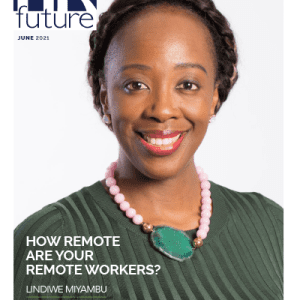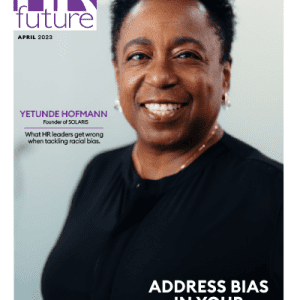Remote working, combined with the changing nature of work and technology, are fueling the demand among employers for a new type of workforce. On top of the traditional skills, today’s businesses also need employees with the ability to run automated systems, engage with customers in a digital marketplace and lead teams in new ways to meet an organisation’s goals.
As the world becomes more digital and connected and businesses look to keep up with opportunities and competition, the pace at which skills and jobs evolve — and, in some cases, become obsolete — is moving faster and faster.
Businesses must determine the skills they’ll need now and in the future and how they’ll help their workforces meet those changing talent needs with a combination of reskilling and upskilling.
It is clear that assessing for future skills is not a point-in-time activity, but rather an ongoing one. Assessment must include behavioural as well as cognitive abilities that transcend some of the fast-moving digital skills in the market. Addressing future skills gaps and creating a long-term plan is critical for employers to align success with their talent and business strategies.
In Depth
Reskilling and upskilling are both essential strategies as employers look to close future gaps in their workforces’ capabilities. Faced with stiff competition for the skills that will be critical in the future, it’s the responsibility of everyone involved with the organisation’s human capital to ensure employees’ future employability. Beyond that, governments and educational systems play important parts in ensuring that everyone has the skills needed for the jobs of the future.
Upskilling involves helping workers meet the changing requirements of their current roles. Reskilling is broader. It involves moving away from what the employee is familiar with in their existing role.
Employers are facing increasing pressure to close skills gaps. In its 2020 “Future of Jobs” report, the World Economic Forum (WEF) estimated that 50 percent of all employees will need reskilling by 2025. And the pace of change for essential skills is gaining speed. For the average worker, the half-life of technical skills has dropped to five years.
In addition, Aon data shows that women are four times more likely to need upskilling. Jobs held by women are at greater risk of elimination due to technological advances than those held by men, according to the WEF. Meanwhile, many of the new positions in the modern workforce favor those with science, technology, engineering and math (STEM) skills. However, women represent just 36 percent of STEM degrees and make up only 25 percent of the STEM workforce, according to the WEF.
As the nature of work changes and some jobs quickly become obsolete, governments, school systems and businesses must partner to help workers develop the skills needed to keep up with the change and ensure healthy economies.
Given the limits of critical talent in technology and data-focused jobs, as well as growing recognition of employers’ responsibility to invest in their people, there is a shift from the war for talent to the race for reskilling and upskilling.
Investing in People to Make Technology Investments Pay
While organisations are investing significant sums in technology, the maximum impact of those investments can only be realised through people.
Taking steps to close future skills gaps will improve organisations’ overall talent strategies. Employers that make reskilling and upskilling part of their value proposition and total rewards strategy will have a good story to tell their employees and their community, giving them an advantage in attracting and retaining talent.
There is a social responsibility element to this initiative. With so many jobs becoming obsolete and many more likely to disappear, reskilling and upskilling is a mutual responsibility between government, educational systems, organisations and advisors.
A Sound Investment
Most employers recognise the value of investing in their human capital. Two-thirds of the employers surveyed by the WEF expect to see a return on investment from reskilling and upskilling within one year.
On average, employers expect to offer reskilling and upskilling to approximately 70 percent of their employees by 2025. Companies surveyed also indicated that 40 percent of workers would require six months or less of reskilling, and 94 percent of business leaders said they expect employees to pick up new skills on the job.
As more organisations digitalise their business, much of the future workforce skills needed will be a combination of everchanging hard technical skills and more lasting foundational as well as transferable softer organisational skills — which, put together, are key attributes for working in a more resilient and agile fashion.
The Path to Closing Skills Gaps
Understanding how current and future workforce architectures relate to each other is essential to building a tailored plan for closing skills gaps. Ultimately, such plans will likely involve a combination of reskilling, upskilling and hiring new talent.
There’s a seven-step roadmap to closing future skills gaps:
- Data Driven Status Quo Analysis – Organisations should build a data baseline to understand their skills prevalence and gaps, helping them craft a holistic reskilling strategy. The baseline should include data on future skills prevalence, workforce mix, automation risk and future skills pay gaps. By benchmarking against peer organisations as well, businesses can gain insights into what competitors are doing to close skills gaps.
- Designing a skills framework defining future requirements – Organisations should assess, define and structure future skill requirements through a capability model for the entire organisation and different business lines on the basis of the business strategy. Such an approach enables a clear direction on reskilling and tracking the progress.
- Building skill requirements into job architecture – Organisations should define the skill requirements by role, building those requirements into the job architecture to provide a sound foundation for human resources solutions and interventions. Doing so provides insights on the proximity between roles and reskilling potential.
- Total rewards – The first step in data benchmarking will reveal information about any pay gaps. Too often, businesses value skills appropriate for former or current business models, undervaluing the skills that will be essential in the future. Organisations should consider not only current rates, but rewards based on a role’s future skills profile. A rewards strategy should be developed to ensure that high-potential employees are valued for their future skills, not only present-day contributions. This also marks the organisation’s move into a skills-based pay strategy.
- Reskilling process design – The gathered data and defined models, combined with a workforce planning derived from the business strategy, will help define the operative upskilling and reskilling strategy, resulting in provided learning as well as career opportunities to the employees.
- Roll out – Engage employees during the build-out of career pathways and development. This ensures that the workforce understands required reskilling areas and enables individual ownership of the reskilling path. In addition, it allows re- and upskilling to become part of the total rewards strategy, fostering engagement and ensuring a mutual journey where no one gets left behind.
- Progress measurement – Measure progress by analysing data to stay abreast of, and adapt to, talent and workforce changes. Continuous benchmarking analysis based on key performance indicators is needed to track progress, combining data from different data sources and HR IT solutions across the employee lifecycle.
As business changes, skills gaps will inevitably emerge. Organisations should take action now to address those gaps by investing in understanding the current state of their employees’ skills; strengthening diversity, equity and inclusion; and identifying employees with the potential to move into future-focused roles and preparing them to do so.
Helping Workers — and the Business — Keep Up With Changing Skills Needs
The nature of business — and the skills required — are changing quickly. Assessing the skills that will be needed in the future and understanding where the business stands today will allow organisations to mitigate the impact of skills gaps.
The future is here. Assessing your workforce for the necessary future skills it has and where gaps exist is critical to navigating and thriving in an environment of constant change.
An Insight from Aon The One Brief
Tarandeep Singh is the global assessments head of Human Capital Solutions at Aon; and Marius Grindemann is director of Human Capital Solutions at Aon.













